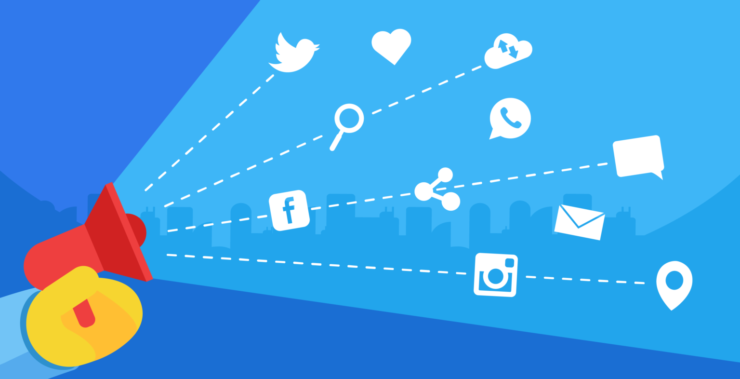A known fact would be that effective communication is the strengthening base for any successful organization. However, it might be difficult to see through the best communication channel or medium to send your message across. The right communication medium ensures that your message is not only delivered, but also understood and acted upon, which is crucial for maintaining engagement and collaboration. Understanding the different communication mediums and how to use them can help you identify the most appropriate one for your purpose. Whether it’s a quick message through instant communication tools or a detailed email, understanding when and how to use these communication mediums is vital to business productivity.
In this reading, I will talk about what a communication medium is, how it has evolved over time, the importance of choosing the right communication medium, types of communication mediums and finally the tips for choosing the best one for yourself.
So let’s begin by defining a communication medium
A communication medium is a channel or route in the communication process through which a sender delivers its message to a receiver. It is important to choose the right medium to ensure that your message is delivered effectively and understood by your target audience. This can take various forms, which will be discussed later in this reading, but some examples could include emails, voice messages, text blast notifications, etc. Depending on the nature of your message, you might use a formal email for professional communication or an instant voice message for quick updates.
In short, communication media are designed to get your message out to your target audience. Choosing the right communication medium can greatly enhance the perception of your message, increasing engagement and responsiveness.
Have communication mediums evolved over time?
The presence of the internet and mass media has changed a lot of things for good. Before this breakthrough, books, messages, and literacy were handwritten which is why it was not widespread.
However, as the mediums of communication evolved over time, business communication practices and techniques also changed with it. Human communication was freed from the medium of just face-to-face interactions due to the advent of writing technology.
By automating the development and dissemination of written text, printing press technology significantly advanced the medium of writing. In comparison to handwritten texts, this marked a new development of mass communication in the form of brochures, magazines, newspapers, blogs, and so much more.
Is it really important to choose the mediums of communication carefully?
Selecting the appropriate channel is essential to guarantee that your message reaches your targeted audience and that they fully comprehend the message’s meaning and significance. When you select the ideal medium, the audience is much more inclined to listen, see or read what you’re saying and comprehend it. This, in turn, can significantly enhance brand loyalty among your audience, as they are more likely to engage with and trust your message.
Interacting with a person for a face-to-face conversation, for instance, might ensure that they understand your intended message and also have the opportunity to ask questions for clarification. Sending an email, on the other hand, may be preferable in a less urgent communication environment or when interacting with someone distant.
Let’s dig into the various types of communication mediums
Choosing the right type of communication medium is like choosing the best tool for the job. Each medium has its own strengths and is more effective in certain situations. Whether you are sharing a business idea, communicating with a team or simply catching up with a friend, understanding the different types of communication mediums can help you decide how best to get your message across. Here we explore the six main types of communication mediums and see how they shape our interactions every day. By understanding them, you can improve the effectiveness of your communication, whether you’re at work, at home, or in your community.
Face-to-face communication
Among the many channels, face-to-face communication, also famously referred to as in-person communication is one of the most popular types of communication models. As the name suggests, this type of communication occurs when two or more people interact directly with each other. This medium encourages real-time, spontaneous conversation and provides immediate feedback, which can be particularly useful for solving problems or discussing important issues.
Face-to-face communication can be either one-way or two-way. For example, if a speaker is presenting a product or idea to an audience, it’s generally a one-way form of communication. However, if the audience is encouraged to ask questions or give feedback, it becomes a two-way interaction.
One of the outstanding features of face-to-face communication is the ability to observe non-verbal cues such as body language, gestures, and facial expressions. These cues are crucial for gauging emotions and reactions, which helps you tailor your message accordingly.
So let’s suppose, you are the speaker, given the non-verbal cues of your audience, you can easily judge if they can gauge your message well – or perhaps are not too bored with your speech. Either way, you can alter your speech and get their attention so you get your message across well.
In contrast, the audience will also be able to read through your non-verbal cues so make sure to interact with your hand gestures, facial expressions, and body language to make it all more interesting and engaging.
The immediacy of this medium of communication is a big bonus. Everyone can take part in the conversation at hand. This enables a free and open exchange of ideas without having to wait for a response.
To sum it up, face-to-face communication is valued because it:
- Involves direct interaction between two or more people
- Encourages spontaneous dialogue with immediate feedback
- Can take the form of one-way presentations or two-way discussions
- Allows you to pick up on non-verbal cues such as gestures, body language, and expressions
- Helps solve problems and discuss important matters more effectively
Virtual communication
Virtual communication is the use of the internet to send messages to the desired audience. It can take various forms including verbal and non-verbal communication. In today’s digital world, this form of communication is an integral part of personal and professional interactions. Whether you’re working remotely or collaborating with clients and colleagues across time zones, virtual communication provides a seamless way to stay connected.
Email, for instance, is a very common form of virtual communication. It’s actually one of the best ways to get your message across to both a mass audience and even a single person – be it sending out promotional emails to your subscribers or an important document to a coworker; emails are an all-rounder! Moreover, emails can be easily archived, allowing users to maintain a record of communication for future reference, a feature that other forms of virtual communication may not offer.
You can also add a CTA to your email signature to clarify what you want from the reader and provide a link to the appropriate destination. This helps guide the recipient toward the next steps, whether it’s making a purchase, scheduling a meeting, or clicking on a relevant link.
Sending texts or instant messages, scheduling video or audio calls, or using a pager or intercom calls are also other forms of virtual communication.
As a matter of fact, virtual communication is regarded as an excellent form of communication medium for remote teams. It breaks down geographical barriers, making it easier for teams to work together and share information efficiently, no matter where they are located. During and after the pandemic, people used this communication medium the most and have become accustomed to its benefits and use. As well as ensuring continuity, virtual communication fosters a more flexible and inclusive working environment. As remote and hybrid working models continue to grow in popularity, virtual communication is expected to play an even more central role in the future of work.
Here’s why virtual communication has become so essential:
- It takes place online and includes both verbal and non-verbal forms
- Popular channels include email, instant messaging, video/audio calls, and chat platforms
- Email is versatile, can be archived, and supports calls-to-action
- It removes geographical barriers and supports remote teamwork
- Encourages flexibility and inclusivity in modern workplaces
Printed communication
Printed communication is still of great value in various contexts, especially in the workplace, although it is becoming less common due to technological advances. This type of communication, also known as written communication, includes documents such as diaries, handwritten notes, memos, reports, and letters. While digital formats have dominated in recent years, the tangible nature of printed materials ensures that they remain relevant in specific professional situations.
Depending on the situation, printed communication can be both informal and formal; and can also go in the form of technical communication. An informal form of communication, for example, is leaving a handwritten note as a reminder to colleagues. On the other hand, a handwritten note for an invite to an event to a colleague is a form of formal printed communication.
Another aspect of printed communication is its role in technical communication. For example, technical manuals, user guides, and instructional documents are typically printed to ensure that they are readily available to employees or customers who need them. These printed materials provide detailed, step-by-step instructions or complex information that requires clear and concise documentation. The ability to provide printed copies of such resources ensures that they can be referred to at any time, even when electronic devices are unavailable.
Despite its many advantages, printed communication, like remote communication, lacks the intimacy and immediacy of face-to-face interaction. It cannot fully convey the nuances of body language, facial expressions, or immediate feedback, making it more difficult to gauge the recipient’s emotional response. However, in contexts where consistency, formality, or record-keeping is required, printed communication remains an indispensable tool in the workplace.
Printed communication continues to matter because it:
- Covers memos, reports, letters, manuals, guides, and handwritten notes
- Can be informal, formal, or technical in nature
- Ensures accessibility even without electronic devices
- Supports record-keeping and official documentation
- Provides consistency but lacks emotional nuance and immediacy
Digitally social communication
This is a form of online communication generally done on the social platforms of an organization or individual. Communication on these platforms is commonly used to interact with the external audience i.e. the consumers as opposed to the internal audience i.e. your employees.
Many businesses utilize social media to reach out to their target audiences with promotional campaigns. Businesses leverage social media marketing trends to capture customers’ attention, and it can mix many communication mediums.
Some platforms, such as Facebook or Instagram support graphics such as photos to communicate, while others such as YouTube focus on video communication. Many social media platforms allow people to communicate in both public and private chats, allowing two or more people to talk.
Internally, certain businesses or work groups may use social networking. For instance, co-workers may use messaging tools to deliver messages to each other rapidly. In other cases, people may undertake outreach with possible Wholesale business partners using professional social media channels such as LinkedIn.
Twitter is a good channel to develop public brand personality. Because it’s recommended that you post up to 15x a day, a variety of Twitter management tools can help you schedule your plan and posts in advance.
Despite the fact that social media is often regarded as an informal medium of communication, it can be a useful approach to interact with a target audience or audience to interact with you for that matter.
In short, digitally social communication stands out because it:
- Takes place on platforms like Facebook, Instagram, YouTube, LinkedIn, and Twitter
- Serves both external audiences (customers) and internal ones (employees)
- Combines text, images, video, and chat interactions
- Helps shape brand personality and connect with target groups
- Is often informal but highly effective for marketing and engagement
Audio communication
Audio communication focuses on using sound to convey a message, making it an effective medium for conveying tone and emotion. Common forms of audio communication include podcasts, voice messages, phone calls, and voice memos. The beauty of audio is that it allows listeners to absorb information while multitasking – think about listening to a podcast while driving, working out or commuting. This flexibility makes it an attractive medium for people who want to stay informed without being tied to a screen or sitting still.
Phone calls and voice messages offer a more personal touch than written messages because they convey not only words but also tone, inflection, and emotion. For example, a phone call allows both parties to hear each other’s tone, making it easier to detect urgency, confusion, or enthusiasm. The emotional context provided by the voice adds depth to the message that text alone may lack. For example, a reassuring tone in a voice message can provide more comfort than a text message.
Hence, to ensure you never miss a call or voice message, consider using a cloud-based PBX system to manage your communication effectively.
Podcasts have also become increasingly popular for delivering in-depth content, as listeners can tune in at their convenience. They allow a deeper exploration of topics and foster a sense of connection between the presenter and the audience. In addition, podcasts cater to different niches and offer valuable content that can be easily consumed on the go. Voicemail is another useful audio communication tool, particularly for team collaboration or one-to-one exchanges, offering a quicker and more personal alternative to email or text messages.
While it’s less interactive than face-to-face communication, audio still allows for meaningful connections and can be particularly effective in creating a more personal or engaging experience. Whether for business or pleasure, audio communication offers a versatile and intimate way to stay in touch with others.
To wrap it up, audio communication works well because it:
- Relies on sound – calls, voice notes, podcasts – to transmit messages
- Conveys tone, emotion, and nuance that text often lacks
- Can be consumed while multitasking
- Podcasts allow deeper dives and stronger audience connection
- Feels more personal than text, though less interactive than face-to-face
Visual communication
Visual communication involves the use of pictures, videos, graphics, and other visual aids to convey messages. This type of communication has become increasingly popular in both business and social settings. It allows complex ideas or data to be simplified by transforming them into easy-to-understand visuals. In today’s fast-paced world where attention spans are shorter, visual communication is a powerful tool to communicate messages quickly and effectively, engagingly capturing attention.
Examples of visual communication include infographics, video tutorials, or even memes. Infographics in particular have grown in popularity as they can present large amounts of data in a compact, visually appealing format, making them easy to digest and share. These visuals are particularly effective at conveying statistical information, comparisons or processes in a way that’s more memorable than long text. In addition, visual aids such as graphs or charts are crucial in business presentations, enabling stakeholders to quickly grasp key insights or trends.
Visual communication is widely used in advertising, where compelling images can capture attention more effectively than text alone. These visuals are used to pique interest, convey emotion, and elicit responses from the audience. Whether through a promotional image or an educational video, visuals help break down complex messages into more digestible pieces of information, making them easier to understand and remember.
In addition, visual communication is often more memorable than other forms because it engages both the analytical and creative parts of the brain. Whether you’re watching a product demo, reviewing a sales report presented as a graph, or observing a design concept, visual communication helps make information more digestible and engaging. This dual engagement – intellectual and emotional – makes visual communication a critical element of effective messaging.
n essence, visual communication is powerful because it:
- Uses images, videos, graphics, and infographics to send messages
- Simplifies complex data into easy-to-digest visuals
- Strengthens presentations, reports, and advertising campaigns
- Captures attention and conveys emotion effectively
- Engages both logical and creative thinking, boosting memorability
Tips for choosing the right mediums of communication
While it may be appealing to interact through every medium, most firms would benefit from a more measured and thoughtful strategy. Before you choose a medium for your intrapersonal communication, you may consider the following points.
Consider the relationship with your communicative audience
Your relationship with your consumers, co-workers, or boss is also an element of choosing the right medium. If you want to communicate with your co-workers, chances are that some people would even be comfortable with WhatsApp.
However, for your consumers, it is more advisable to get your message across through emails using email marketing software, social media platforms, or custom mobile apps.
Moreover, how you communicate with your boss also depends on the leadership styles that they have adopted.
In some firms, you can only email them while in some you can even text them. A more professional approach towards this would be to get your message on an email for better documentation too.
Familiarize yourself with the needs of your team
It may seem apparent, but the medium of communication you choose is primarily determined by your team’s preferences. What kind of a team do you have and how or where do they prefer to communicate? Is it through audio, video, or just text messages?
To familiarize yourself with this situation, you may conduct employee surveys to know what suits their needs the best. Understanding where your employees spend most of their time can also aid in selecting the appropriate medium of communication.
For example, your team may be more equipped with using collaboration tools such as Chanty as a communication channel – or perhaps they simply use a messaging app like WhatsApp.
The level of urgency for your message
Urgency can also define the medium of communication that you should generally use. Take into account the importance of your message and the likelihood that your target audience will understand and respond to it depending on the channel.
Let’s take the example of contacting your coworker outside business hours for an urgent matter – emailing them for this purpose may not be the best solution, however, a phone call is more suitable for such situations.
Similarly, as stated above, since written communication lacks the intimacy of in-person contact therefore it may not elicit instant responses. In contrast, you may get a more natural response when talking in person.
In a nutshell, you need to identify the level of urgency in the responses to your message and thus choose the medium therein.
Examine your financial situation
Because you’ll have to spend money to get your word through, your spending plan will have an impact on the communication mediums you choose. Consider this: Is the medium within your firm’s total expenditure?
You may be able to find affordable plans for communication mediums and tools. Or you are probably looking out for expensive options. This requires you to analyze the allocated budget of your organization and choose a channel that best suits your needs.
The type of communicative information
Particular mediums make it easier to convey various kinds of information. When sharing facts with your audiences, for instance, using visual clues might help you communicate more effectively.
If you’re addressing data trends, you might use a medium of communication that enables you to include graphics, such as graphs and charts. Having a written record of information that you may have to provide a reference to in the future can assist you in storing that information. If you want to document a chat, you might opt to utilize email or a written memo.
Consider the nature of your message
While some messages are formal, others are informal. A handwritten note is generally more informal than a formal email or a printed document.
Therefore, if the nature of your message is such that it is formal, for example calling a candidate for an interview, then consider using formal mediums of communication as well such as an email or a formal phone call, or even a formal social platform such as LinkedIn.
However, if it is informal, such as giving a thank you card to a coworker for their support on a project, then a simple handwritten card will also suffice.
Overall, the future entails consolidating all the different mediums of communication channels into a single platform that will act as a central source of pertinent information for each employee. For this purpose, there are a bunch of communication and collaboration platforms that can assist purpose.
For example, Chanty helps you integrate all your synchronous communication under a single roof. With third-party integrations, you can easily manage a variety of tasks in just one download.









Add comment